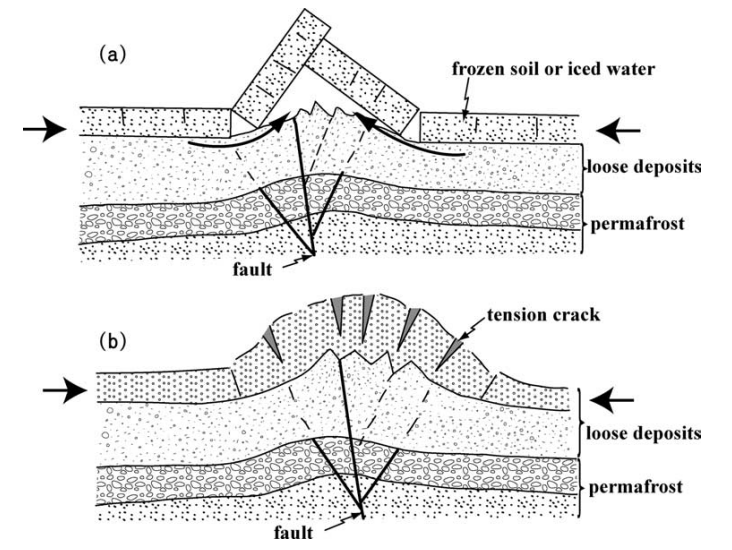Clearing up the Description of Earthquakes by Jalal al-Din al-Suyuti
| Aliases | Arabic |
|---|---|
| Al-Suyuti | |
| As-Suyuti | |
| Jalal al-Din al-Suyuti | |
| Abu 'l-Fadl 'Abd al-Rahman ibn Abi Bakr ibn Muhammad Djalal al_Din al-Khudayri |
| Aliases | Arabic |
|---|---|
| Ibn 'Asakir | |
| al-Hafidh ’ibn ‘Asakir | |
| Alī ibn al-Ḥasan ibn Hibat Allāh ibn `Abd Allāh, Thiqat al-Dīn, Abū al-Qasim, known as Ibn `Asakir al-Dimashqi al-Shafi`i al-Ash`ari | الحافظ المؤرخ علي بن الحسن بن ھبة اللہ بن عبداللہ بن الحسین الدمشقي الشافعي |
| Thikat al-Din Abu 'l-Kasim 'Ali b. Abi Muhammad al-Hasan b. Hibat Allah b. 'Abd Allah b. al-Husayn al-Dimashki al-Shafi'i al-Hafiz |
Background and Biography - al-Suyuti
Background and Biography - Ibn 'Asakir
English from Ambraseys (2009)
- from Ambraseys (2009)
Damascus was shaken by an earthquake at dawn on Thursday 11 Rabi’ II in the year 233; a quarter of the mosque [Ommayad?] was torn open, its great stone blocks were thrown down, and the minaret collapsed. The bridges and houses collapsed, and the earthquake traversed al-Ghut’ah; it destroyed Darayyah, al Mazza, Bait Lihyah and others. People went to the musallah where they prayed until midday. Then everything calmed down. The earthquake reached Antioch.’ (al-Suyuti Kashf 25, 26).
English from Sbeinati et al. (2005)
In 233 A.H. 11 (847 A.D. November 25) there was a dreadful earthquake in Damascus where houses fell down and people died under debris. This earthquake extended to Antioch causing destruction, to Al-Jazira causing damage, and to Al-Mousel killing 50000 people as it was said. In his book Al-Zalazel (the earthquakes), Al-Hafez Ibn Asaker mentioned that there was an earthquake in Damascus on Thursday 11 Rab’ 253, destroying a quarter of the Ommyad Mosque the great, the minaret fell down and bridges and houses collapsed, this earthquake reached Al-Ghouta where Darayya, Al-Mazzeh, Bait Lahya and others were destroyed. (Al-Suyuti)
English from Guidoboni et al. (1994)
There was a strong earthquake mentioned by al-Hdfiz Ibn Asakir, in [his] Kitab al-zalazil (Book of earthquakes):
The earth shook in Damascus on Thursday morning, 11 rabi` II of the year 233 [24 November 847 A.D.]. A quarter of the mosque [the Ommiad Great Mosque] was broken off and its great stones were pulled apart. The minaret fell down; and bridges and houses collapsed. The earthquake reached al-Ghtita [al-Ghouta] and it destroyed Darayya, al-Mazzah, Bayt Lahya and other. People went to the mosques to pray till mid-day; then the world became calm again.
English from Taher (1979)
220 A.H./835 A.D.
- from Taher (1979:30-32)
The earth was shaken by earthquakes for forty days; the city of Antioch was subject to destruction.4
Footnotes
Footnotes
4 As Suyûti, Kashf, 25.
232 A.H./847 AD
- from Taher (1979:30-32)
Earthquakes5 increased throughout the world, notably in Syria, the walls of Damascus and Homs were destroyed; the most violent earthquakes occurred in Antioch and al-'Awàçim. This intense seismic activity continued for several days. The author of Al-Mireât [Sibt Ibn al-Jawzi?] then says:
Footnotes
5 As Suyûti, Kashf, 25. He cited another earthquake in the year 230 AH with the same details - and events.
233 A.H./848 AD
- from Taher (1979:30-32)
In 233/848, a very violent earthquake1 occurred; al-H'âfidh'ibn 'Asakir mentioned it in "Kitâb az-zalazil (the book of earthquakes); he says again:
Damascus was shaken by an earthquake at dawn on Thursday 11 Rabi' II and 233; a quarter of the mosque was torn to pieces, the large stones were uprooted and the minaret collapsed. Bridges and houses collapsed, the seismic wave traveled through al-Ghût'a; she destroyed Dârayyâ, al-Mazza, Bait Lihyâ and others. The people went to al-Muçallâ where they prayed until noon. Then everything calmed down. The seismic wave reached Antioch.
Footnotes
1 As Suyûti, Kashf, 25, 26. according to Ib 'Asa kir; adh Dhahabi, al 'iber, 1/413.
French from Taher (1979)
220 A.H./835 A.D.
- from Taher (1979:30-32)
La terre fut secouée par des tremblements de terre durant quarante jours; la ville d'Ant'êkia fut sujette à des destructiones4
Footnotes
4 As Suyûti, Kashf, 25.
232 A.H./847 AD
- from Taher (1979:30-32)
Les séismes5 se multiplièrent de par le monde, notamment au Châm, les murs de Damas et Hums furent détruits; les séismes les plus violents se produisirent à Antioche et à al-'Awâcim. Cette intense activité séismique se poursuivit durant plusieurs jours. L'auteur de Al-Mir'at dit ensuite :
Footnotes
5 As Suyûti, Kashf, 25. Il a cité un autre séisme l'année 230 H. avec les mêmes détails et événements.
233 A.H./848 AD
- from Taher (1979:30-32)
En 233/848, un séisme1 très violent se produisit; al-H'äfidh'ibn 'Asakir le mentionna dans "Kitâb az-zalâzil (le livre des tremblements de terre); il dit encore :Damas fut secouée par un séisme à l'aube du jeudi 11 Rabî' II et 233; le quart de la mosquée fut déchiqueté, les grosses pierres furent arrachées et le miraret s'affaissa. Les ponts et les maisons s'effordrèrent, l'onde sismique parcourut a1-Ghût'a; elle détruisit Darayya, al-Mazza, Bait Lihyâ et d'autres. Les gens gagnèrent el-Muçalla où ils prièrent jusqu'à midi. Puis tout s'apaisa. L'onde séismique atteignit Antioche.
Footnotes
1 As Suyûti, Kashf, 25,26, selon Ib'Asa kir; adh Dhahabi, al 'iber, 1/413.
English from Sprenger (1843)
- Abridged translation from Sprenger (1843:742)
English from Sprenger (1843) - embedded
- see top of page 742 starting with
130. There was an earthquake at Damascus
- Abridged translation from Sprenger (1843:742)
- from archive.org
An Original Manuscript - Arabic
- The Noor book courtesy of Najib Abou Karaki (personal correspondence, 2022)
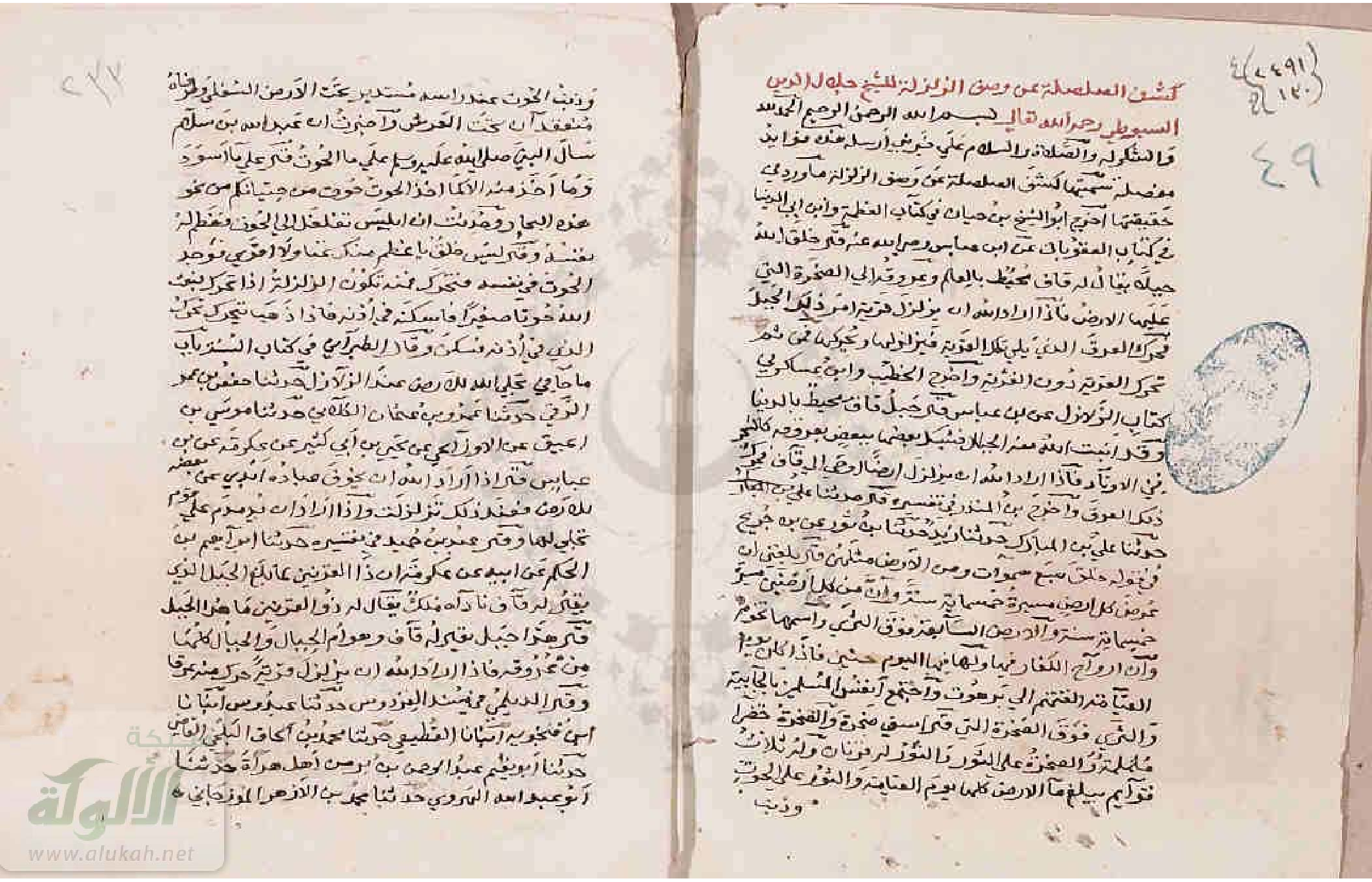


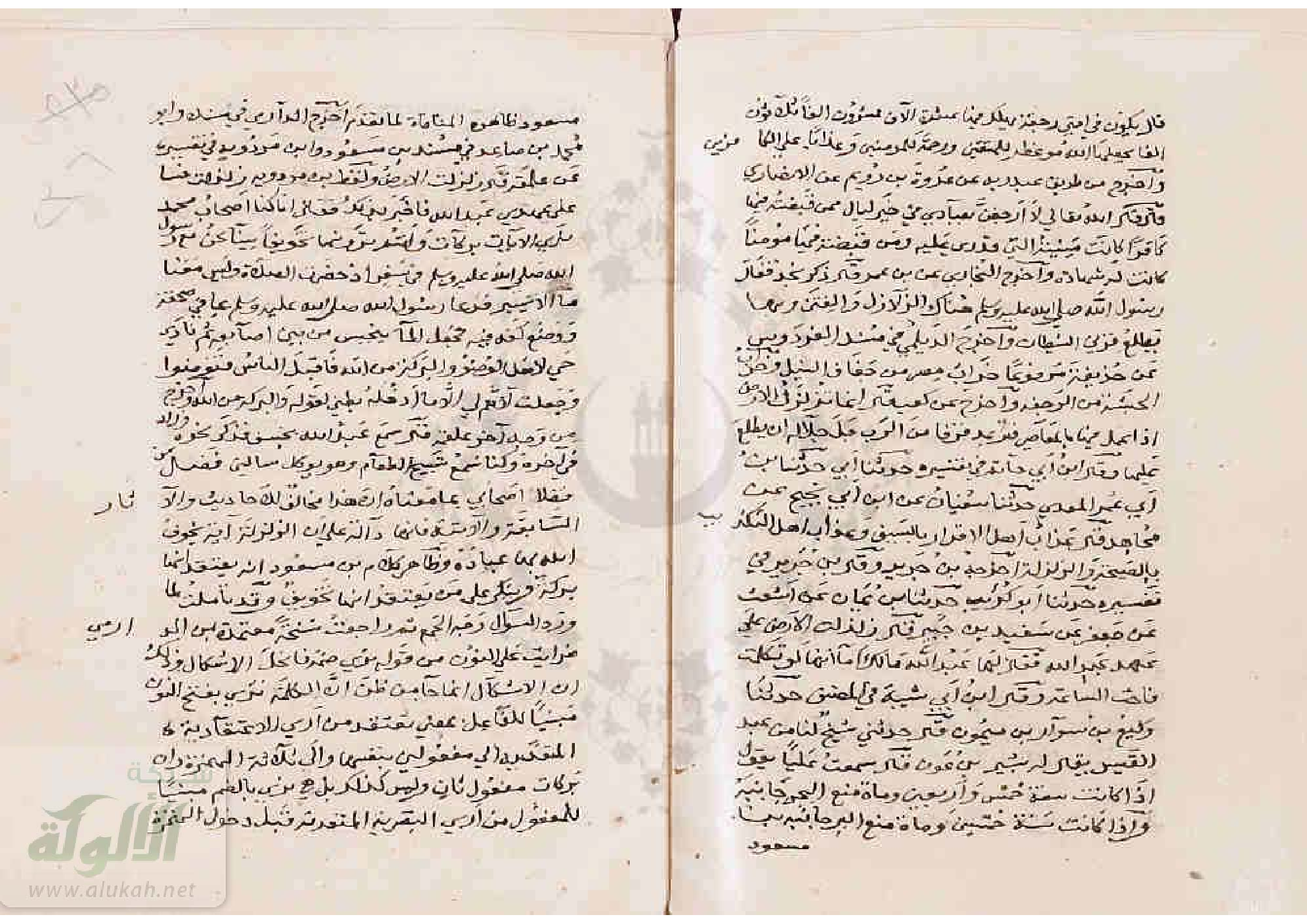
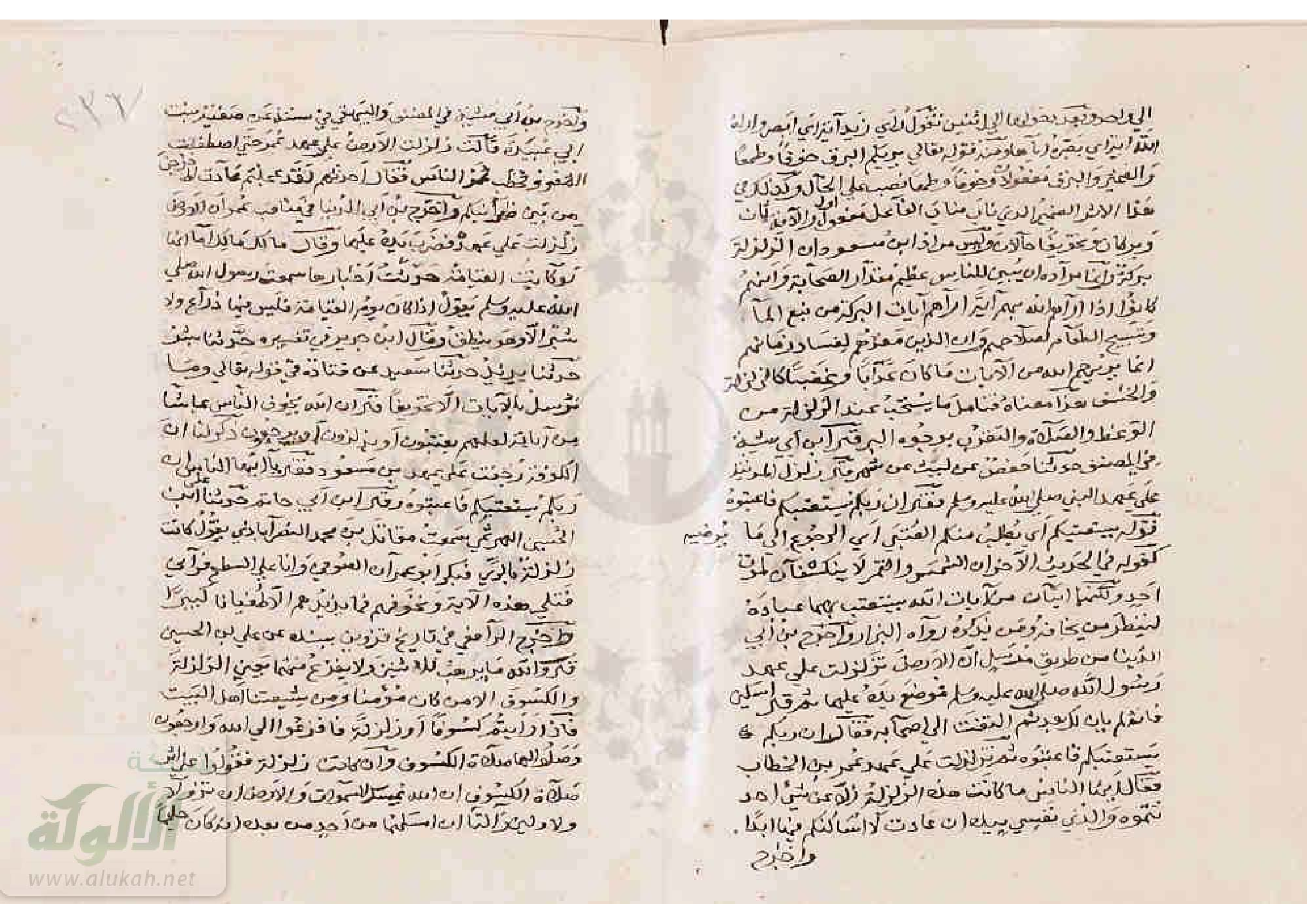








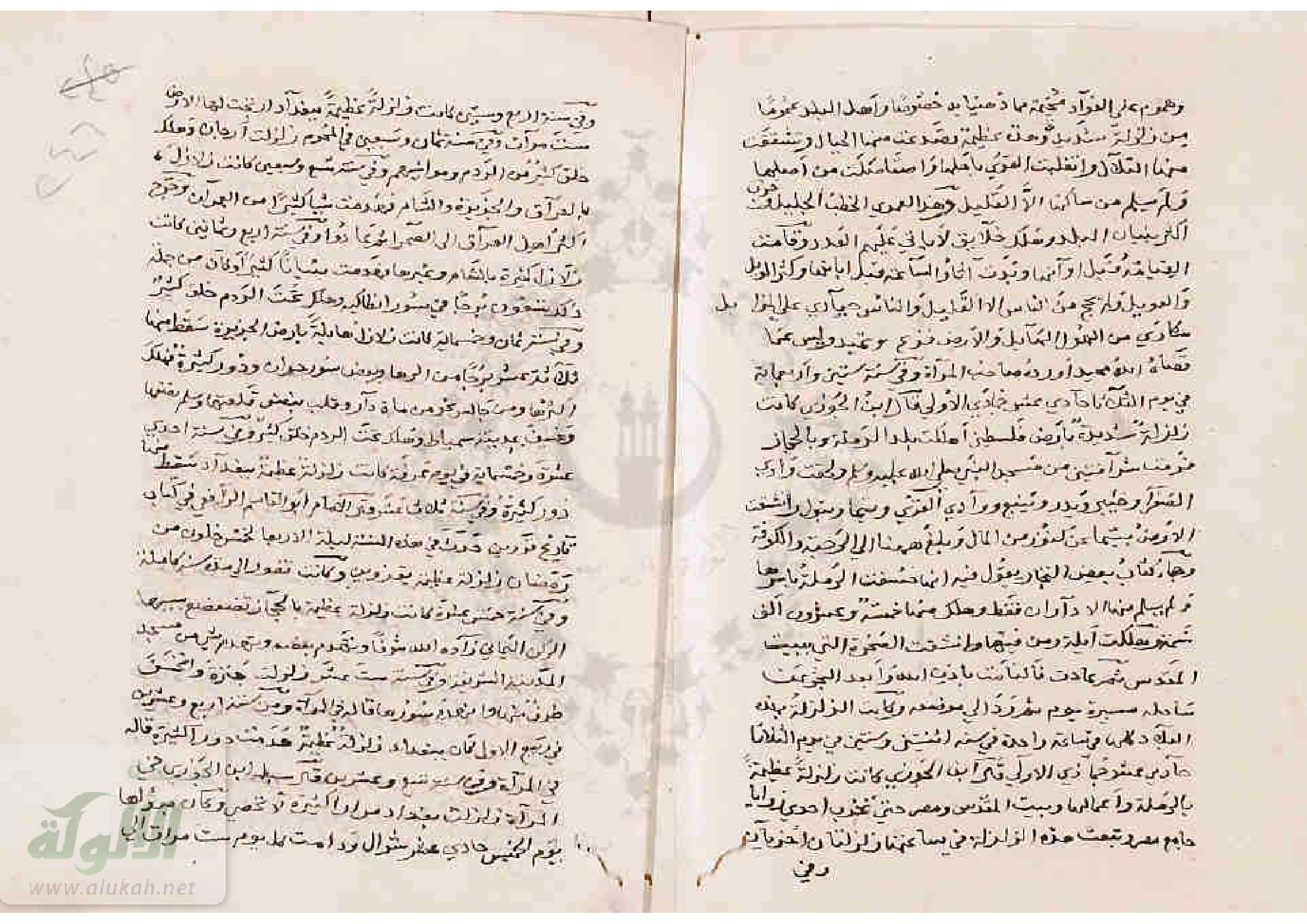



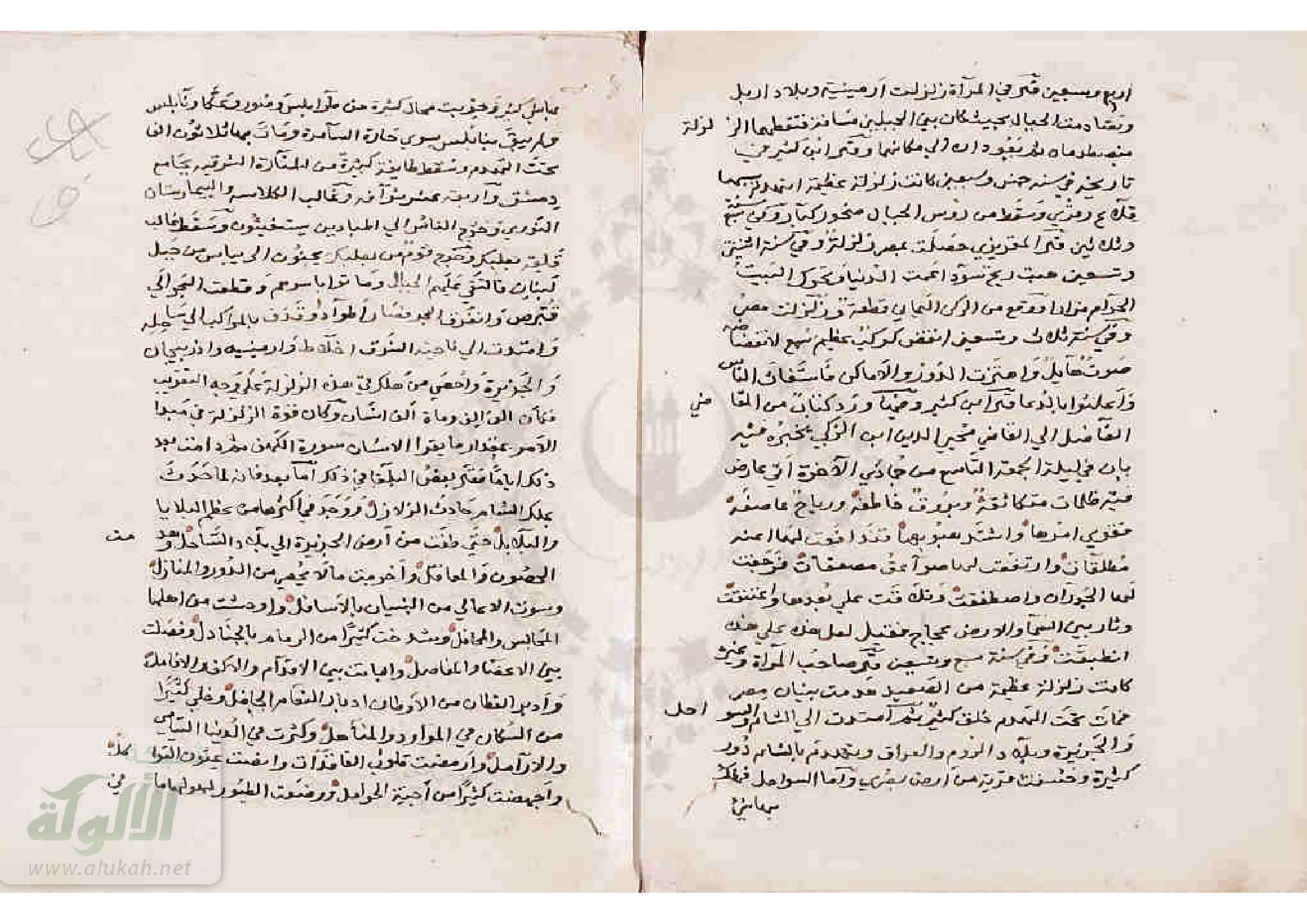



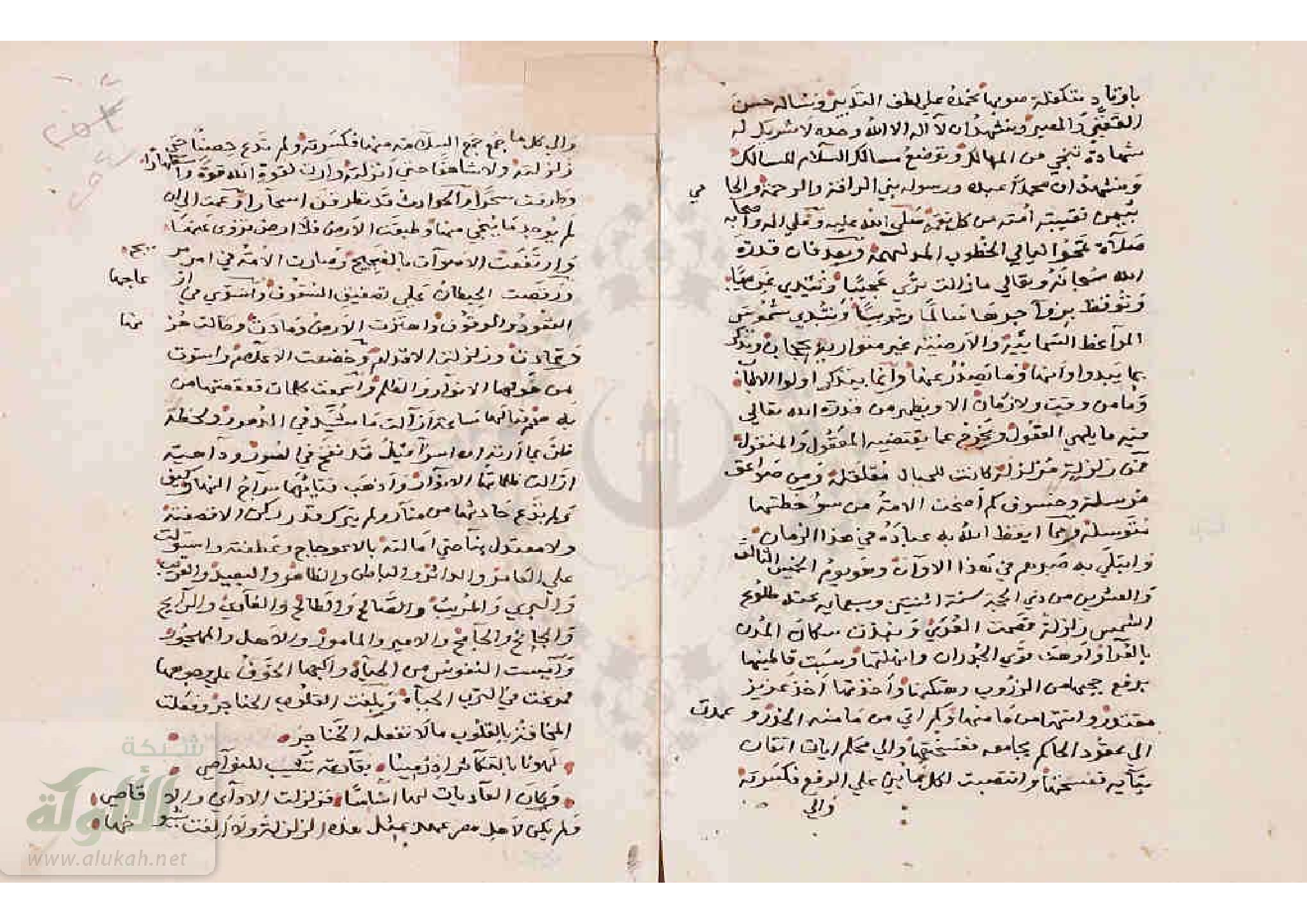
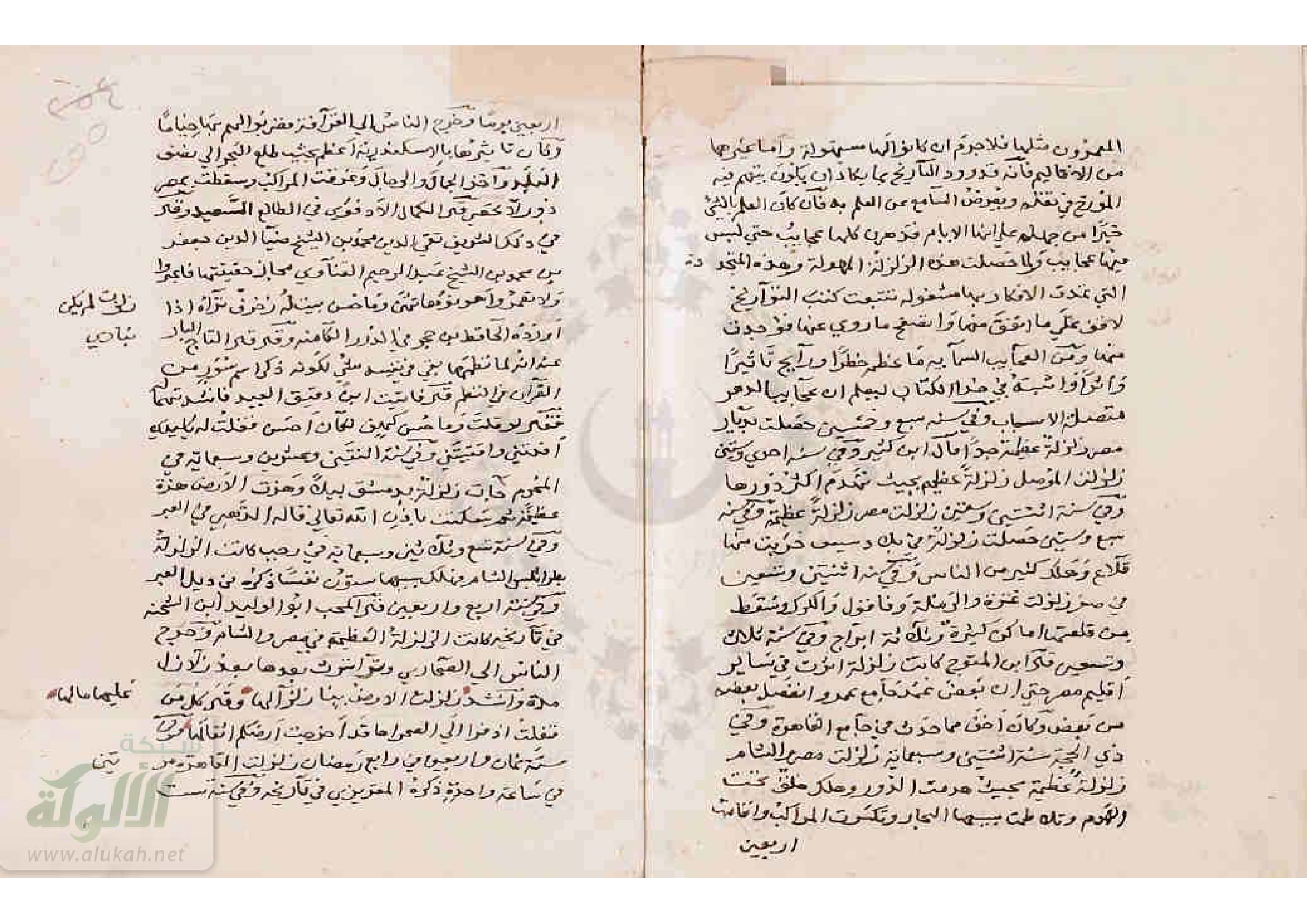

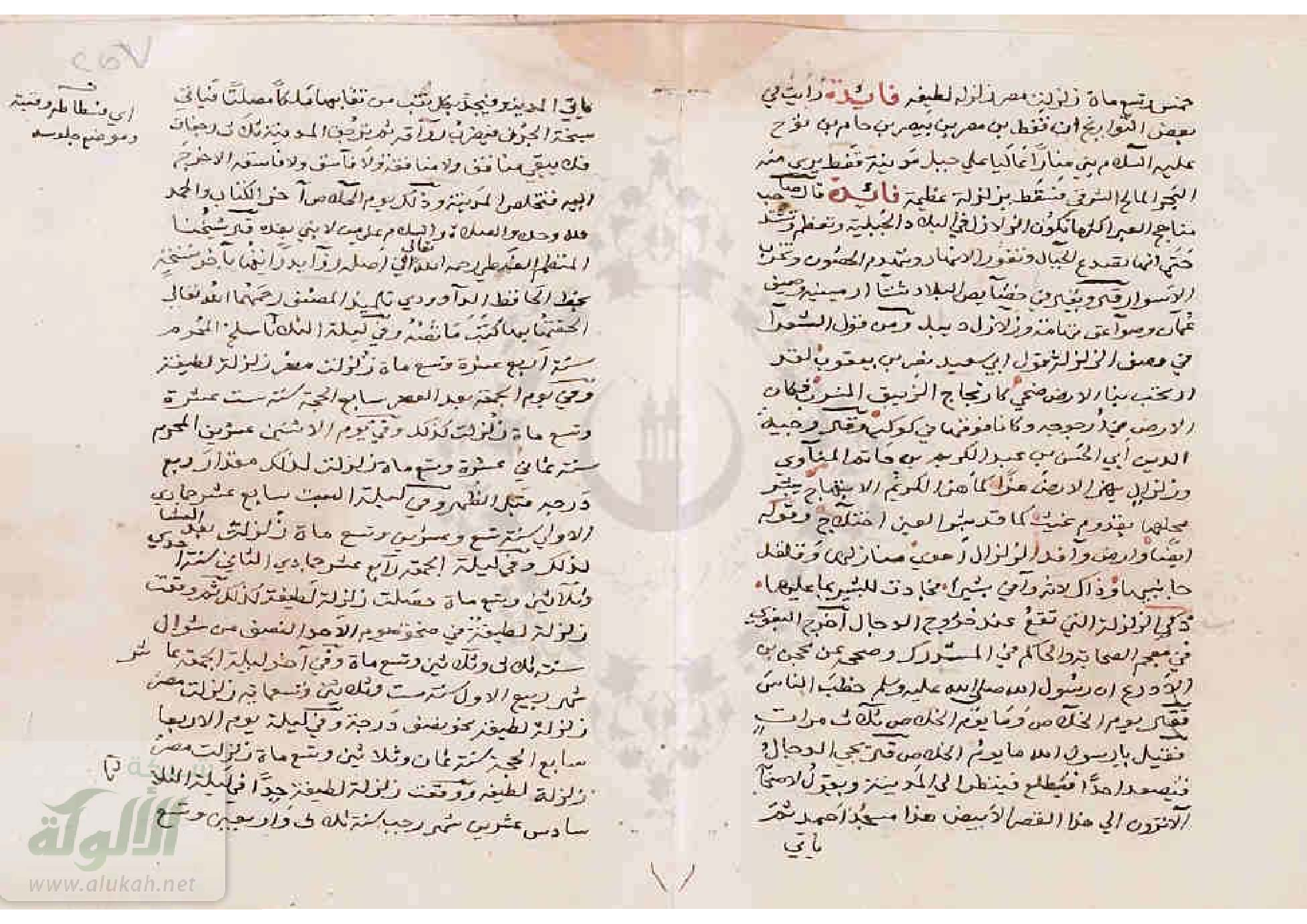
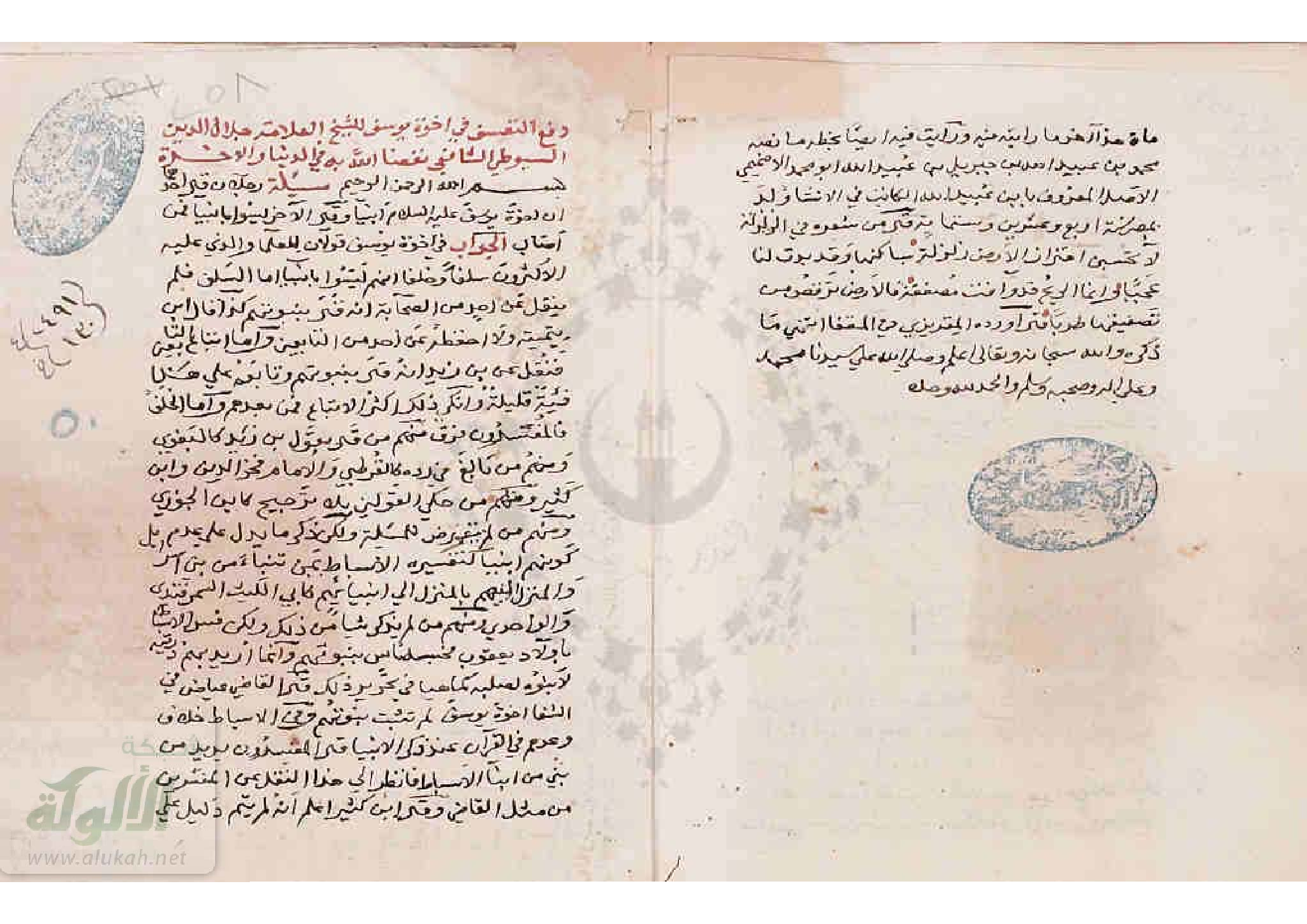

| Date | Reference | Corrections | Notes |
|---|---|---|---|
| Dawn on Thursday 24 November 947 CE | at dawn on Thursday 11 Rabi’ II in the year A.H. 233 | none |
|
a very violent earthquake occurred
Damascus was shaken by an earthquake at dawn on Thursday 11 Rabi’ II in the year 233, a quarter of the mosque [Ommayad?] was torn open, its great stone blocks were thrown down, and the minaret collapsed. The bridges and houses collapsed.
the earthquake traversed al-Ghut’ah; it destroyed Darayyah, al-Mazza, Bait Lahya and others
People went to the musallah where they prayed until midday. Then everything calmed down
The earthquake reached Antioch
- Damascus
- al-Ghut’ah
- Darayyah
- al-Mazza
- Bait Lahya
others
The earthquake reached Antioch [felt ?]
- Homs (possibly according to Al-Suyuti's source named as the author of Al-Mireât [Sibt Ibn al-Jawzi?])
Sources - al-Suyuti
References - al-Suyuti
References - Ibn 'Asakir

